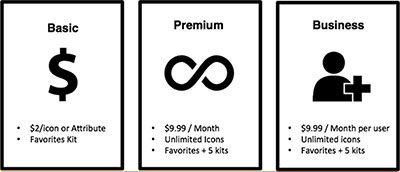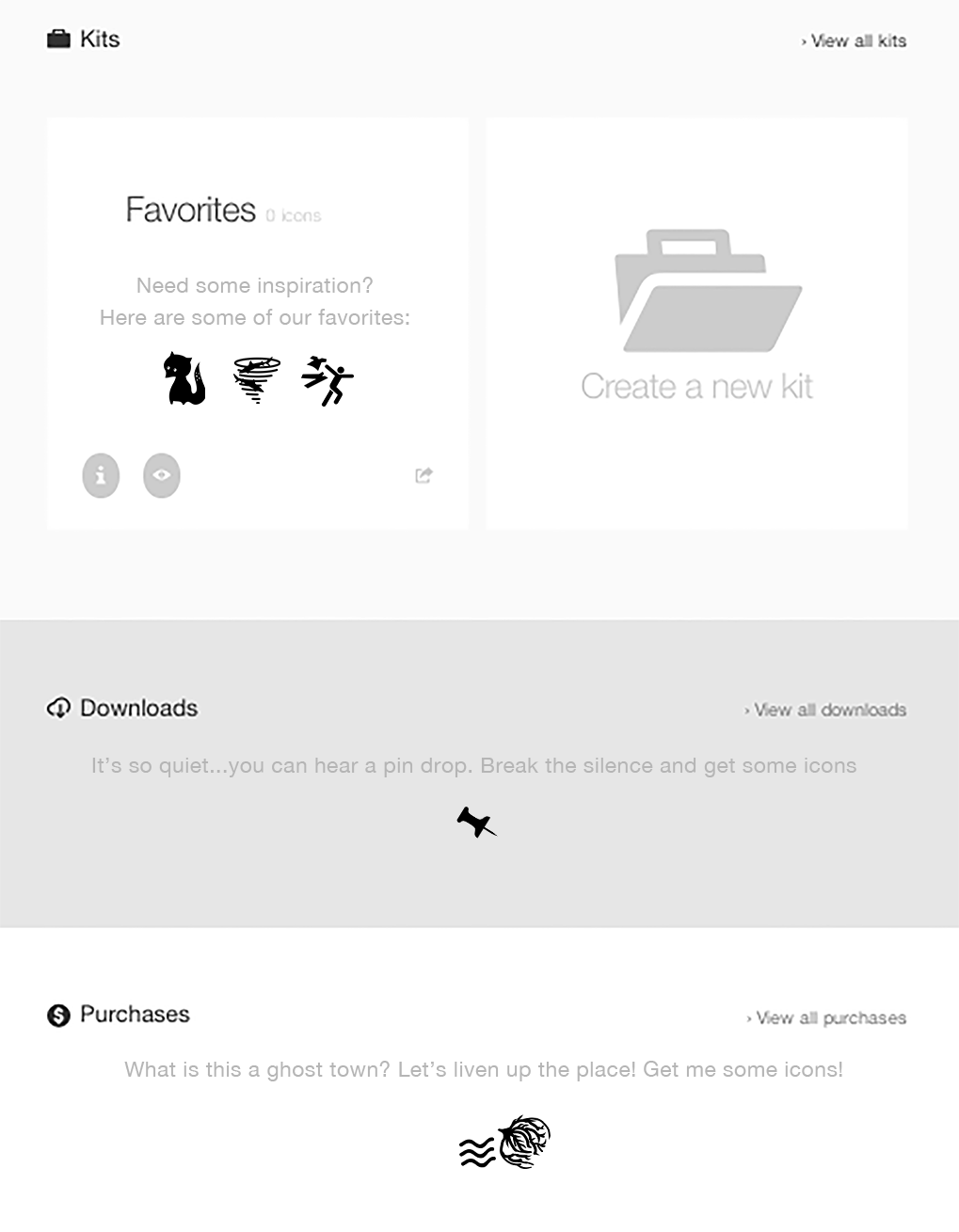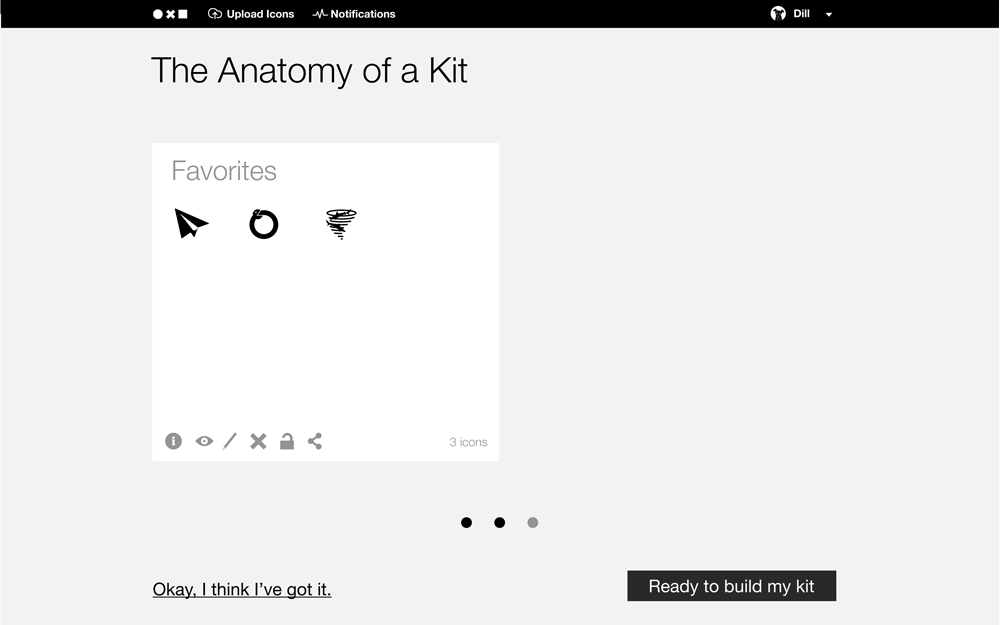Who are TNP Users?
The beginning of the project started off with the creation of a general user survey distributed via email to the 328 users based in Chicago. The survey consisted of 10 questions about user's demographics, icon usage, and usage of TNP platform. There was a 10% response rate. From that we narrowed down the pool for in-person interviews based on diversity of their professions, age, and activity on TNP site.
For the in-person interviews, we designed a series of 30 questions under the topics of:
User's background & technology usage(on mobile, web, and other digital devices)
Icon Usage, what they are used for, the frequency they used, and the search for/selection/quality of icons used.
The Noun Project inquiries, about TNP, usability of the site, purchasing and selling of assets



